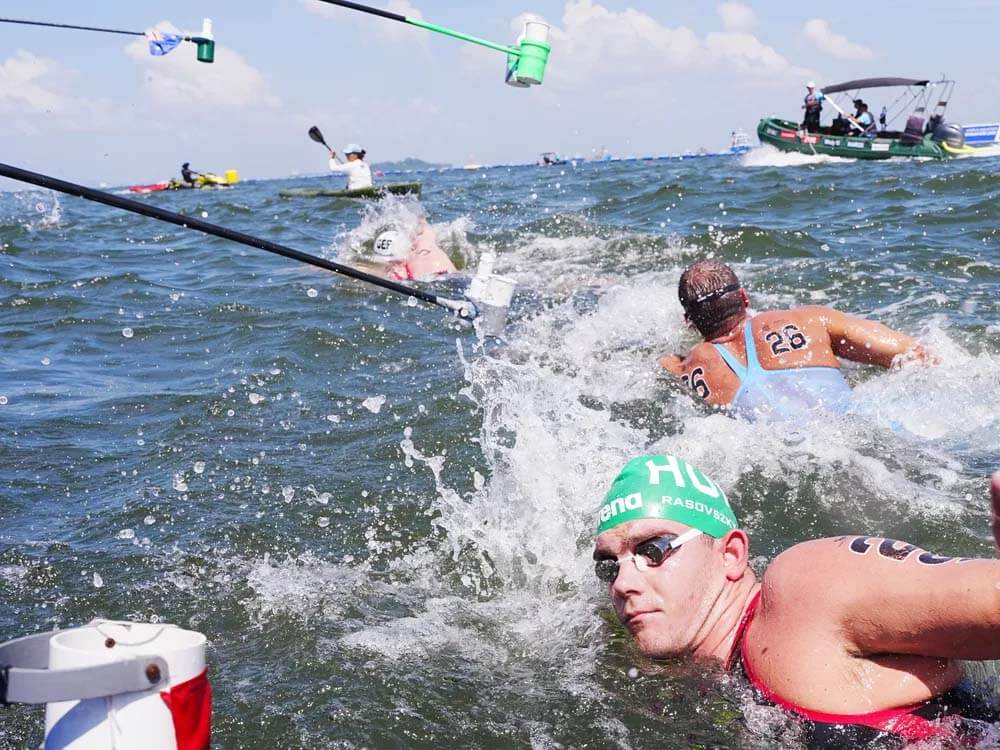Why Open Water Swimming Deserves More Attention in the U.S.
At the break of dawn, a group of swimmers step into a quiet lake, scanning the open horizon. There are no lane lines, no black lines on the bottom of the pool. Simply the water, wind, and the unknown. This is open water swimming. It is raw, tactical, challenging, and in the United States, it is still underutilized, especially at the age-group level.
Even though open water has been part of the Olympic program since 2008, it remains a side note in most youth swimming programs across the country. While other countries have embraced it as a valuable component of athlete development, many American swimmers grow up without ever experiencing it.
That does not mean the U.S. needs to overhaul its system. It simply means we need to introduce swimmers to open water earlier and give them the opportunity to explore it as part of their journey in the sport.
A Different Kind of Tough
Open water is not just pool swimming without walls. It requires a unique set of skills that are physical, mental, and strategic. Swimmers must learn to sight buoys, maintain direction without visual cues, and adapt to constantly changing conditions. There is no pace clock or coach calling out splits. Swimmers must make their own decisions in real time.
It also demands mental strength. Dealing with waves, weather, and crowded packs teaches athletes how to stay calm and focused under pressure. These are lessons that transfer well into pool swimming and life outside of the sport.
Open water builds resilience, independence, and a deeper connection to the experience of swimming. It pushes athletes to think for themselves and trust their training, which can be incredibly empowering for young swimmers.
Why It Gets Less Attention
One of the main reasons open water has not taken hold in the U.S. is access. Many clubs do not have safe or convenient open water venues nearby. Coaches may be unsure how to prepare athletes for open water racing, and some parents might be hesitant about the unfamiliar environment.
There is also a lack of exposure. Unlike pool meets, which are highly structured and easy to follow, open water races can be long, unpredictable, and harder to watch. As a result, they get less media coverage and are less visible to the average swim family.
And then there is tradition. American swimming culture has been built around the pool; club teams, high school meets, and college scholarships are all based on pool performance. Open water exists outside that system, which makes it easy to overlook.
Why Opportunities Matter
The goal is not to replace pool swimming or shift focus entirely. Instead, the U.S. swimming community should look at open water as a valuable complement to what athletes are already doing. It is another tool in the toolbox, and one that adds variety, fun, and new challenges to the athlete experience.
When swimmers are introduced to open water earlier, they are more likely to embrace it, understand it, and even excel in it. And for some athletes, it may open doors to opportunities they might not find in the pool.
Events like the East Coast Open Water Festival are great examples of how to create structured, positive experiences that make open water accessible and exciting. These types of events show that with the right environment, swimmers can thrive in open water and grow from it.
What Coaches and Teams Can Do
You do not need to live near a beach or a giant lake to begin open water preparation. Coaches can start by incorporating basic elements into practice such as sighting drills, no-wall swims, pack formation sets, and tactical pacing. These skills build familiarity and confidence, even before swimmers enter an actual open water race.
Clubs can also seek out local races, plan travel to open water events during the offseason, or host team-building days at safe venues to introduce swimmers to the format. These experiences can be memorable and meaningful, especially when shared with teammates.
A Path Worth Exploring
Open water swimming deserves more attention in the United States, not because it is better than pool swimming, but because it adds depth, challenge, and diversity to the sport. It allows athletes to grow in different ways, encourages self-reliance, and offers a fresh perspective on what it means to compete.
Introducing open water earlier and giving swimmers the chance to experience it is a simple yet powerful step. It helps create well-rounded athletes, builds excitement, and keeps the sport fun and engaging.
At its core, swimming is about movement, freedom, and exploration. Open water captures all of that. And when we give swimmers the opportunity to step outside the lane lines and into the unknown, we show them just how far the sport can take them.
